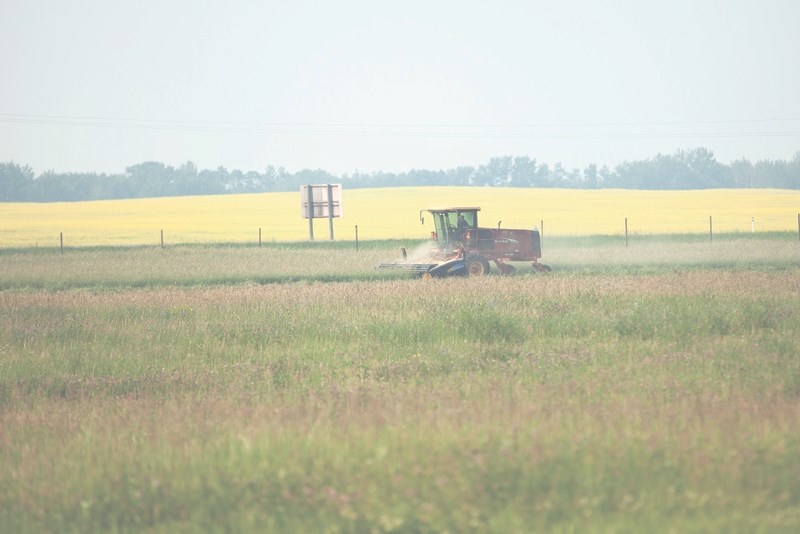The County of St. Paul has officially declared a State of Agricultural Disaster in order to make the federal and provincial governments aware of the dire, dry conditions that are burdening producers in the area.
The decision came last Tuesday, during a special county council meeting.
Dennis Bergheim, the agricultural fieldman for the county, says the area is only now getting the moisture that it “really needed in June,” and as a result, there “has been a big reduction in the yields” for cereal crops, hay crops and oilseed crops. He adds that in some areas, yields are going to be “half, or less than half” of last year’s totals.
He says the area in the county in most dire straits is east of Elk Point. According to a soil moisture report published on the Alberta Agriculture website on July 24, the low amount of precipitation that specific area has received for most of the growing season is seen only once every 25 to 50 years.
County of St. Paul Coun. Glen Ockerman, who is also a producer in the area, says the problem with low moisture began last August, and it has grown so severe that it reminds him of “the great drought of 2002.” The lack of snow cover in the area throughout winter put farmers at a disadvantage at the start of growing season.
Bergheim says the situation is not as bad just outside of St. Paul, as there are “pockets of different crops in this area that look reasonable.”
This alert was also raised to bring awareness to the poor conditions of pastures in the area, which is leading to some producers having to make a tough choice of selling some of their herd due to an inability to feed them.
“There is not enough of an inventory of silage for farmers to feed their stock throughout winter, and that is why some are choosing to sell,” explains Bergheim. “There is also little feed that is available to purchase, and the feed that is available is expensive.”
One of the producers that have already sold cattle to try and ease this feeding problem is Ockerman. He shipped off 50 to 60 of his breeding heifers.
“If we are struggling to feed them in June, how are we going to possibly feed them during the winter?” he asks. “There are a lot of people that have made big financial commitments to purchasing these livestock so that they can produce for them. Now, they are in a position where they have to liquidate their assets.”
Ockerman says the price of cattle has greatly elevated in the past decade, making this a big-dollar industry. Individuals that have been making strong profits are now finding their operations completely crippled.
“There are problems that farmers have to deal with every year, but the conditions this year are completely excessive and unmanageable,” says Ockerman.
Adding serious insult to this dry situation is a pesky grasshopper population that has been devouring the rare good crops in the area.
“Whenever there is a drought situation, the grasshopper population flourishes,” says Ockerman.
The County of St. Paul and a number of other Alberta municipalities are hoping this declaration of agricultural disaster will inspire changes to the crop insurance programs that are available to farmers.
The county is hoping the federal and provincial governments can initiate a disaster recovery program to help agricultural producers come out the best they can from this bad situation. Both Bergheim and Ockerman suggest adjustments to the crop insurance programs would be a good avenue to explore. The prices, they say, have not been adjusted for inflation.
Ockerman compares this situation to the devastation caused by the southern Alberta floods in 2013.
“Those floods are having long-term consequences, and these conditions will have long-term effects that will affect all of Alberta,” says Ockerman. “There is no quick fix to this problem.”
He says he is hoping the federal and provincial governments will step up and support producers in a similar manner to the aid that was offered to the communities devastated by the 2013 floods.



